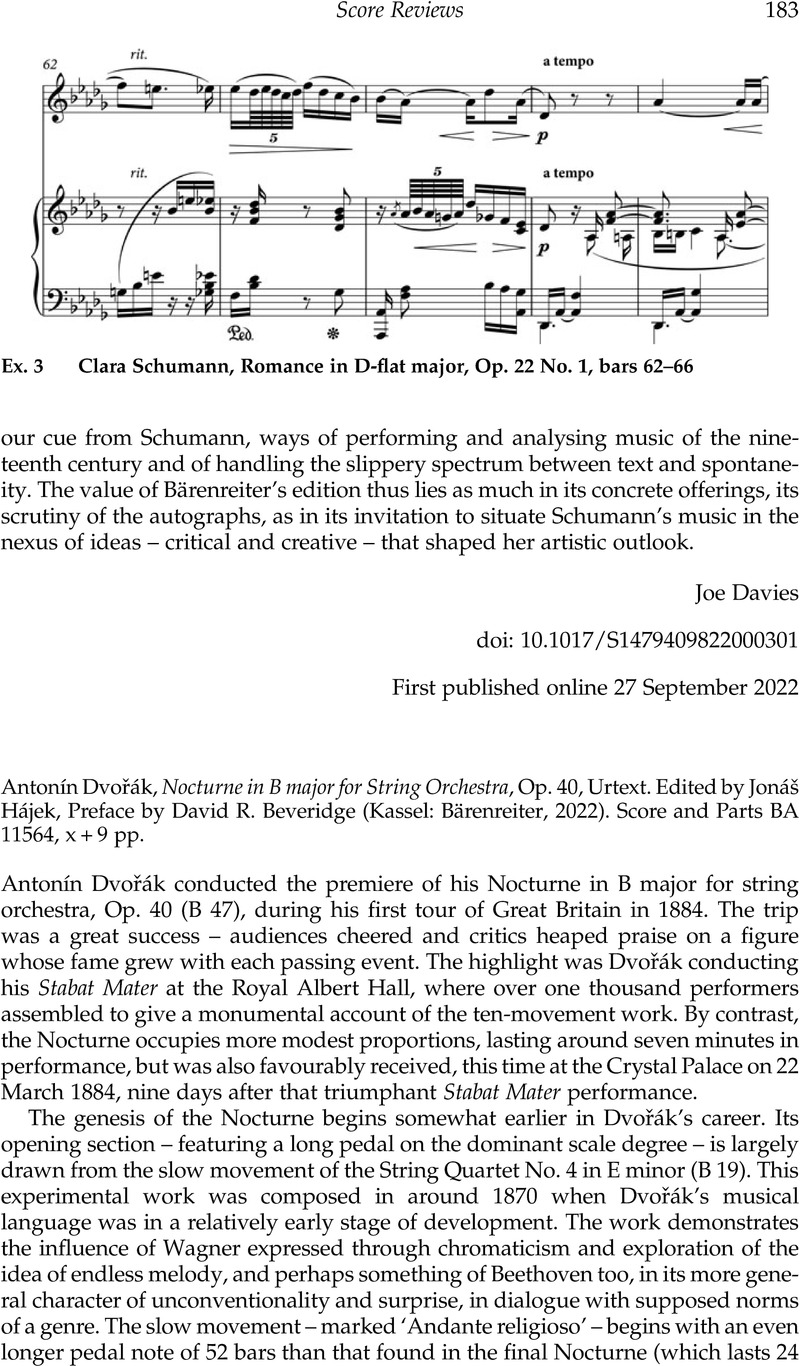No CrossRef data available.
Article contents
Antonín Dvořák, Nocturne in B major for String Orchestra, Op. 40, Urtext. Edited by Jonáš Hájek, Preface by David R. Beveridge (Kassel: Bärenreiter, 2022). Score and Parts BA 11564, x + 9 pp.
Review products
Antonín Dvořák, Nocturne in B major for String Orchestra, Op. 40, Urtext. Edited by Jonáš Hájek, Preface by David R. Beveridge (Kassel: Bärenreiter, 2022). Score and Parts BA 11564, x + 9 pp.
Published online by Cambridge University Press: 30 March 2023
Abstract
An abstract is not available for this content so a preview has been provided. Please use the Get access link above for information on how to access this content.

- Type
- Score Review
- Information
- Nineteenth-Century Music Review , Volume 21 , Special Issue 1: Clara Schumann: Changing Identities and Legacies , April 2024 , pp. 183 - 186
- Copyright
- Copyright © The Author(s), 2023. Published by Cambridge University Press
References
1 The Times, 24 March 1884, 6, quoted in the item under review (v).



